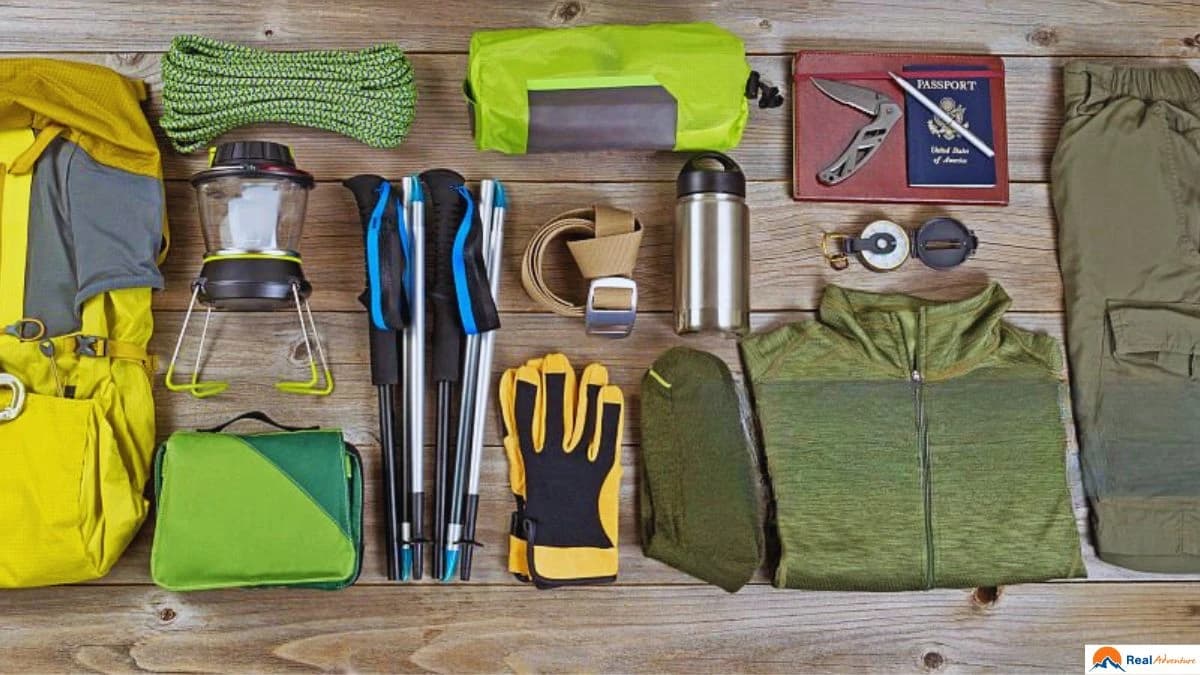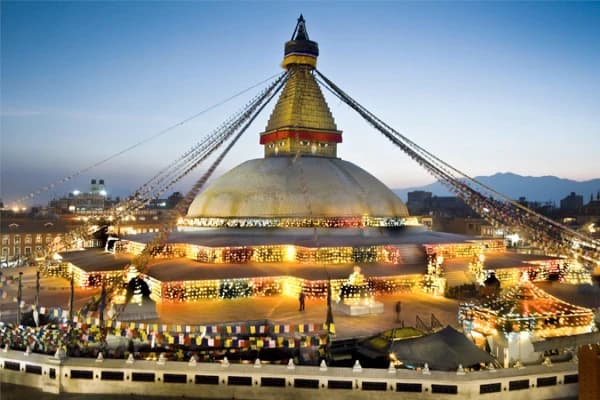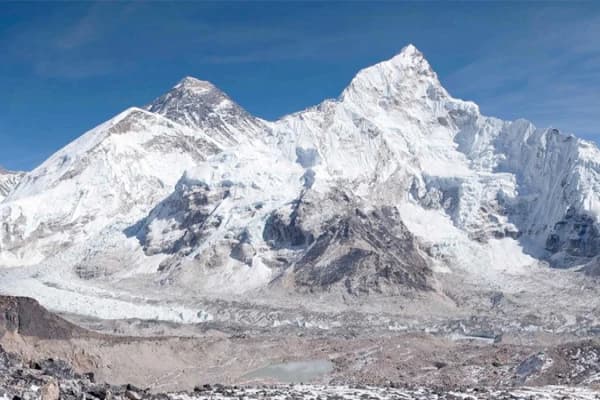Whereas EBC trekking is the ultimate dream of many adventure lovers, doing it in January takes it to the next level. The Everest Base Camp Trek 14 Days is a dangerous yet pleasing trail that offers a glimpse into undisturbed freshness because of the Himalayas. Cold, crisp air with silent trails makes it the ultimate experience for any adventure-seeker in extreme conditions.
Everest Base Camp Trek in January [2025] – Winter Adventure
The Everest Region offers some of the most breathtaking landscapes in the world; hence, every step of this journey is worth the challenge it comes with. The Everest Base Camp Trek in January presents a unique opportunity to experience the beauty of snow-capped peaks, clear skies, and a peaceful, less crowded trail, making it an unforgettable adventure.

What Makes January a Unique Time for Trekking?
- Fewer Crowds: January is considered the offseason for visiting the EBC trek. There will be fewer tourists, and you will have more time on the trail and at all the essential stops.
- Stunning Winter Scenery: Snow-covered mountains, ice trails, and crystal-clear skies create breathtaking scenery during this winter wonderland, allowing unique photo opportunities and a stunningly different landscape.
- Clear Mountain Views: Because of the dry air in winter, the sky is usually more transparent, and the views of Everest and other peaks around are unmistakably clear, making the trek more intense and appealing.
- Lower Trekking Costs: Due to low demand this month, the price for an Everest Base Camp Trek in January is relatively lower. Flights, hotels, and other services may be cheaper than during peak seasons.
- Quieter Accommodations: There are fewer trekkers, so teahouses and lodges along the route are less crowded. That provides a much more relaxed and comfortable stay and ample time to relate positively with local hosts.
- Enhanced Sense of Adventure: Winter offers additional challenges, making the trek more rugged and adventurous. Conquering the elements will improve the feeling of triumph at EBC.
- Deep Connection with Nature: Solitude during winter trekking allows you to completely give in to the beauty and serenity of the Himalayas without any hindrance.
Everest Base Camp Trek Itinerary for January
The Everest Base Camp Trek—12 Days offers an unequaled adventure through the Himalayas, with the right pacing concerning acclimatization. You will view breathtaking scenery, experience the local culture, and experience the thrill of arriving at EBC.
Day 1: Fly from Kathmandu to Lukla, Trek to Phakding [2,610m | 3-4 hours]
Day 2: Trek from Phakding to Namche Bazaar [3,440m | 5-6 hours]
Day 3: Acclimatization Day in Namche Bazaar [3,440m]
Day 4: Trek from Namche Bazaar to Tengboche [3,870m | 5-6 hours]
Day 5: Trek from Tengboche to Dingboche [4,360m | 5-6 hours]
Day 6: Acclimatization Day in Dingboche [4,360m]
Day 7: Trek from Dingboche to Lobuche [4,940m | 5-6 hours]
Day 8: Trek from Lobuche to EBC, Overnight in Gorak Shep [5,364m (EBC), 5,170m (Gorak Shep) | 7-8 hours]
Day 9: Hike to Kala Patthar, Descend to Pheriche [5,545m (Kala Patthar), 4,371m (Pheriche) | 6-7 hours]
Day 10: Trek from Pheriche to Namche Bazaar [3,440m | 6-7 hours]
Day 11: Trek from Namche Bazaar to Lukla [2,860m | 6-7 hours]
Day 12: Fly from Lukla to Kathmandu [1,400m | 35-minute flight]
Weather and Conditions: What to Expect in January

Temperature extremes: Day vs Night
Trekkers to EBC must be prepared for the vast difference in daytime and nighttime temperatures in January. Although January is an exciting winter option, the best time for the EBC trek is spring and autumn, with moderate temperatures. During the days in January, temperatures range from about 5° to -5° C, while it gets much colder as one goes higher up.
In January, nighttime temperatures fall drastically; most nights, they drop to -15° to -20° C or 5° to -4° F, sometimes even higher in high altitudes. This significant temperature difference automatically means that layering and good-quality winter gear are decisive factors during the trek for comfort and safety concerns.
How the Weather Affects Your Trekking Experience
- Cold temperatures require extra preparation
- Shorter daylight hours
- Increased physical demand
- Variable trail conditions
- Possible route changes
- A quieter and more peaceful experience
- Stunning, clear mountain views
- Lower energy levels
Challenges of Trekking in January

Before going into details, many trekkers ask, "How hard is the EBC trek?" While considered a challenging adventure, it is accessible for trekkers at a moderate fitness level, mainly if you are prepared for the extreme cold and high altitude conditions in January.
- Extreme Cold and Temperature Drops: The temperatures in January can be pretty brutal, especially at night. It is necessary to stock up on high-quality winter gear and extra layers for bone-chilling temperatures. When asked how cold Mount Everest is, the temperatures can go to a low of -20°C or even lower at a higher altitude, which makes it essential to be well prepared against the cold.
- Shorter Daylight Hours for Trekking: As daylight hours are fewer, trekkers need to begin early in the morning and utilize their time correctly to ensure they reach a destination before nightfall, which may make them feel like they're hurrying through the trek.
- Higher Risk of Altitude Sickness: Cold weather may make changes in altitude more stressful on the body, increasing the potential danger of altitude sickness and necessitating acclimatization and closer attention to one's health.
- Snow-Covered and Slippery Trails: Most trails will be occupied by snow and ice, giving way to slippery paths that are hard to handle; hence, extra caution should be taken, probably supported by additional equipment like crampons.
- Limited Accessibility to Certain Paths: Some routes are not passable due to high snow precipitation; this also requires flexibility in the trek schedule, and detours can't be excluded.
- Reduced Availability of Accommodations and Services: Many teahouses shut down in January, making finding accommodations difficult and limiting amenities availability. Therefore, this needs planning.
- Need for Specialized Winter Gear: Winter trekking requires high-quality clothes and equipment that can withstand low temperatures, which raises the financial cost and weight of the backpack.
- Unpredictable Weather Conditions: This month characterizes the weather as unexpected, and sudden falls in temperature, or even snowstorms, would influence safe conditions. For that, constant attention to forecasts and adaptability in plans are required.
Limited Availability of Services and Accommodations
During the low season, such as the Everest Base Camp Trek in January, many teahouses are closed, limiting the availability of accommodations and food spots along the trail, especially at higher altitudes. Food and lodging become more expensive and scarce, with meals ranging from $5 to $15 and room rates between $10 and $30 per night.
Bookings will secure accommodation when possible, and having backup snacks for the trek should ensure you stay fueled where options are limited. Heating, where available, can be an added cost, so budget $5 to USD 10 per night for that extra warmth.
How to Deal with Cold and Snow on the Trail
- Layer your clothing
- Use quality winter gear
- Wear crampons and use trekking poles
- Take shorter, frequent breaks
- Stay hydrated and fueled
- Keep your head and hands warm
- Use hand warmers
- Keep moving at a steady pace
How to Prepare for the Everest Base Camp Trek in January
Essential Gear and Clothing for Winter Trekking

- Insulated winter jacket
- Waterproof and windproof outer shell
- Thermal base layers (top and bottom)
- Moisture-wicking socks (multiple pairs)
- Insulated gloves (and liners)
- Warm hat and scarf
- Gaiters to protect against snow and water
- Waterproof, insulated boots
- Trekking poles with snow baskets
- Crampons or micro spikes for icy conditions
- Insulated sleeping bag (rated for sub-zero temperatures)
- Layering system (mid-layers like fleece or down)
- Neck gaiter or balaclava for extra warmth
- Sunglasses with UV protection
- Lightweight, breathable rain poncho or jacket
- Extra sets of gloves, socks, and hats
- Windproof pants and jackets
- Thermal footbeds or insoles
For More Information: Everest Base Camp Trek Packing List
Physical Preparation
- Focus on cardiovascular exercises: running, cycling, or hiking to increase your endurance.
- Incorporate uphill walking or stair climbing to simulate the steep terrain on which one will be trekking.
- Practice carrying a loaded backpack to build strength and get used to trekking with weight.
- Include interval training to build stamina so that you can recover quickly during the trek.
- To handle tough trails, use strength training, particularly for the legs, core, and upper body.
- Take longer hikes on different terrains to get a feel of what you will experience on the trek.
- Do balance and stability exercises to improve coordination on slippery, uneven surfaces.
- Gradually extend the duration and intensity of workouts to prepare for long, cold days out on the trail.
What to Do in Case of Emergency or Extreme Weather
In an emergency or extreme weather, you must first seek shelter in a nearby teahouse or lodge for your protection. Keep warm; listen for the weather updates and inform your guide or local authorities. Bring an emergency ration of food, water, a first-aid kit, and other medicines, and descend immediately if altitude sickness symptoms appear. Stay calm, and know you have a plan should anything unexpected arise while on the trail.
The Significance of a Flexible Itinerary
An EBC Trek in January requires a highly flexible itinerary because of unpredictable weather that might delay or change your route. With flexibility, one can allow rest days for better acclimatization and around snowstorms or trail closures. Having enough time to change safety plans and finish the trek excellently despite any eventuality lessens the stress level.
Tips for a Safe and Successful Trek in January
- Acclimatize Properly: Allow your body time to adjust to the high altitude. Plan gradual ascents and rest days.
- Keep Yourself Hydrated: Even though it's cold, hydration is essential. Drink lots of water to sustain energy levels and reduce the risk of altitude sickness.
- Dress in Layers: Layering helps regulate body temperature. Wear moisture-wicking base layers, insulating mid-layers, and a waterproof outer shell to stay warm and dry.
- Be Prepared for Weather Changes: January is usually an unpredictable time of year. Carry extra clothes and gear, and always be ready for a sudden blizzard or possible drop in temperature.
- Take It Slow: Hike leisurely to conserve energy and avoid exhaustion. Give your system time to acclimate to the high altitude and cold temperature.
- Listen to Your Body: Feel any signs of fatigue or altitude sickness. If the symptoms occur, go down immediately and seek medical aid.
- Pack Smart and Light: Keep only the essential items and ensure your equipment is winter trekking-friendly. Be thoughtful of pack weight, as cold conditions may get more challenging.
- Hire a Guide or Porter: Considering the guide or porter hiring option, this will be handy in finding routes carrying gear and keeping you safe through the harshness of winter.
How does EBC trekking change throughout the year? Have a look at our related posts:
Final Thoughts
Trekking to Everest Base Camp in January is a thrilling and challenging experience. This winter trek can be enjoyed with proper preparation, equipment, and flexibility in the itinerary. Nothing can hinder your understanding of the snow-capped peaks of Everest and quiet landscapes except for the cold and snow.
Real Adventure welcomes all trekkers planning an Everest Base Camp Trek in 2025, with opportunities for the EBC Trek in January to make it safe and memorable. Whether you want to inquire about the cost of the EBC trek in January or seek advice regarding the EBC weather in January, our team is always ready to help and guide you through every step of your journey.
FAQs
Can you hike to Everest Base Camp in January?
Yes, it is possible to hike to Everest Base Camp in January; however, this requires extra preparation because of the colder weather and difficult trail conditions. With proper equipment and adequate support, including acclimatization, one can safely make this unique winter adventure without problems. Real Adventure offers professional support to make the journey safe and memorable for trekkers.
What is the weather like at EBC in January?
The weather in EBC in January is freezing, mostly below freezing at night. Bright days with chills are also standard, and snow conditions usually prevail, which may affect the trail's accessibility. However, January is also when clear skies enable breathtaking mountain views that make the trek genuinely remarkable.
How much does the EBC trek in January cost?
The prices for trekking to Everest Base Camp in January range between $1,200 and $1,500, depending on services such as accommodation, gear, and guide support. Real Adventure offers packages that include everything one may need, from trekking permits to expert guidance. You can be assured of a well-planned winter trek experience for this price.
What should I pack for the EBC trek in January?
Packaging in January means insulated multilayered clothing, waterproof jackets, thermal gloves, and a winter-rated sleeping bag. Clampons for icy trails and sun protection for clear days would also be suitable. Real Adventure can provide detailed information on packing to help trekkers stay warm and comfortable during the trek.
Is the EBC trek in January suitable for beginners?
January is challenging, but total beginners with reasonable fitness levels and minds can do the trek. Real Adventure includes additional acclimatization days and guides to help beginners get used to the altitude and cold. This can be an enriching journey for new and seasoned hikers if adequately prepared.
Explore Everest Region Trekking Packages
- Everest Base Camp Trek via Cho La Pass & Gokyo Lakes - 19 Days
- The Everest View Luxury Lodge Trek - 8 Days
- Everest Three High Passes Trek -22 Days - Himalayan Adventure
- Everest Base Camp Trek with Island Peak Climb - 19-Day Journey
- Everest Panorama Trek - 9 Days
- Gokyo Valley Trekking - 14 Days
- Gokyo Renjo La Pass Trek - 15 Days



-(6).webp&w=3840&q=75&dpl=dpl_CtNAyRzUAwPdWKDCFxYk5p2VryPh)

-(5).webp&w=1200&q=75&dpl=dpl_CtNAyRzUAwPdWKDCFxYk5p2VryPh)
